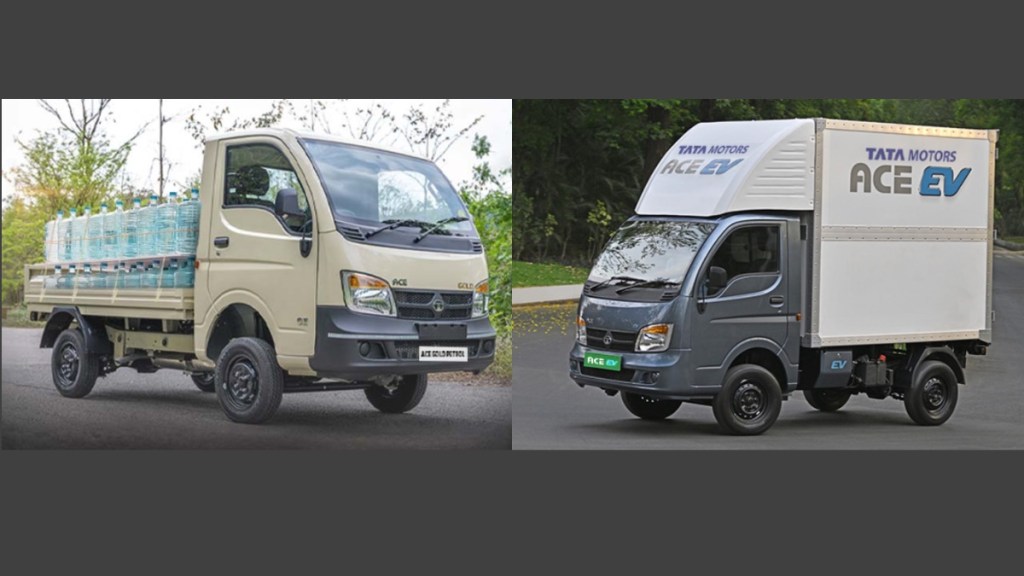By Gagan Agrawal
Logistics is a tough nut to crack. Think 10-15 percent margins for third-party logistics (3PL) or fleet operators who deliver for the likes of Amazon, Flipkart, Porter, BlueDart etc. Electric vehicle transition is proving to be even tougher.
Let’s look at the backbone of urban delivery in India: The last mile. With spoke-side warehouses, 3PL would make daily milk runs between 80 and 120 km per day, bringing goods from the city periphery to the inside. This chain has been heavily reliant on 4W vehicles such as the Tata Ace (750 kg rated) and Mahindra Bolero Pickup (1.7 ton rated).
Electrifying these fleets is the most serious challenge today for the government and the OEMs alike. The tailwinds are clear – starting from Delhi Govt’s announcement, urban logistics must be electrified to make our cities pollution-free. But the question is, can we do it economically? And without subsidies?
A brief look at the monthly margins will tell you how difficult it gets. For a 10-15 percent margin business, EV already eats into most of it. Why is that? Some of the challenges as below:
First, the cost of the product increases, thereby increasing fixed costs in EMIs. This results in the payload which almost invariably decreases, compensating for the extra battery mass in the same legacy structure. So revenue doesn’t scale proportionately just because one is transitioning to EVs. The cargo type gets constrained as now you can carry only light e-commerce parcels and not heavy loads to suit EV application.
Thus a 3PL is squeezed on revenue and cost, while trying to maintain a 100 percent uptime to just eke out a small margin in the next 2-3 years aided by hedging the low electricity cost as compared to fuel cost.
| Economics for 1-shift | 4W CNG | 4W EV |
| Monthly EMI | 13,750 | 23,530 |
| Driver Cost | 18,000 | 18,000 |
| Insurance + Maintenance | 2167 | 2333 |
| Fuel / Electricity Costs | 9450 | 4250 |
| 43,367 | 48,113 |
Therefore as a solution to cope, most fleets would run 2 shifts to sweat the vehicle to split the high EMI cost across 2 shift economics. Most of the time, this demand is not linear, and as a result a fleet operator sees at least 3-4 loss-making months. This severely impacts the solvency of the business as EMI is a fixed expense.
Sweating the asset has its cons too – fast charging degrades the battery life much faster, reducing the second-hand value of the vehicle.
Ultimately, no matter how you do the math, the conclusion stares you in the face. We need these 4W vehicles to be electrified more economically. One method is subsidies – but that’s not a long-term sustainable solution to the exchequer. The second method is innovation.
Also read: Why now may be the best time to buy an electric vehicle
Innovation must address 3 key points:
Minimal cost increase that can be hedged with lower electricity cost with a buyback under 12 months. This has happened in 2W and 3W, but not 4W yet. Similar or high payload as compared to Diesel/CNG. This calls for an urgent measure to remove dead mass or lightweight the vehicles for EV or Hydrogen era. Revenue must not be compromised. On the contrary, courier/e-commerce companies today are willing to pay a 5 percent extra sustainability revenue if they get the desired payload on the vehicle.
Higher cubic feet volumetric loading than Diesel/CNG to enable wider use of the vehicle and thus increase options on type of revenue. 100 percent uptime warrants real-time telematics, fault detection and OTA updates to resolve or call a QRT team to the faulty vehicle site to maintain 100 percent uptime.
Thus a combination of lightweighting, affordable manufacturing, telematics, real-time data, and customer-spec-led OEM engineering can solve most of the problems faced in the 4W EV transition.
But who’s listening? Today, what the sector needs is 4W startup challengers to incumbent OEMs, who seem to be asleep at the wheel. If we don’t collectively innovate, we are staring at an alarmingly high forex spend on fuel combined with pollution and heat levels that are only going to become worse.
Trucking accounts for 90 percent of transportation emissions in India – solving the last mile is just the first step. The government’s role in incentivising this R&D will go a long way in India achieving its Paris and G20 goals and prove as a torchbearer in a sector where every country today is struggling to electrify trucking. We need an automobile revolution. Just electrifying legacy vehicles won’t cut it.
(The author is CEO, Planet Electric Inc. Views expressed are the author’s own and not necessarily those of financialexpress.com.)



















